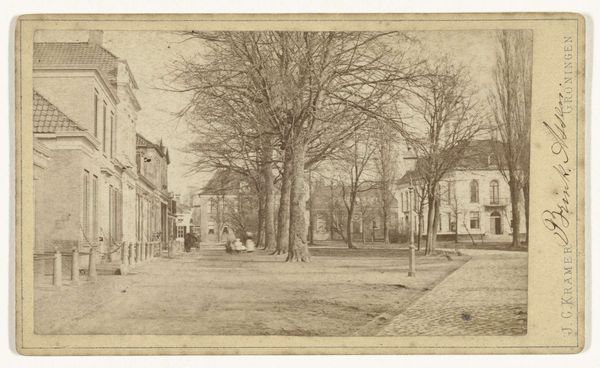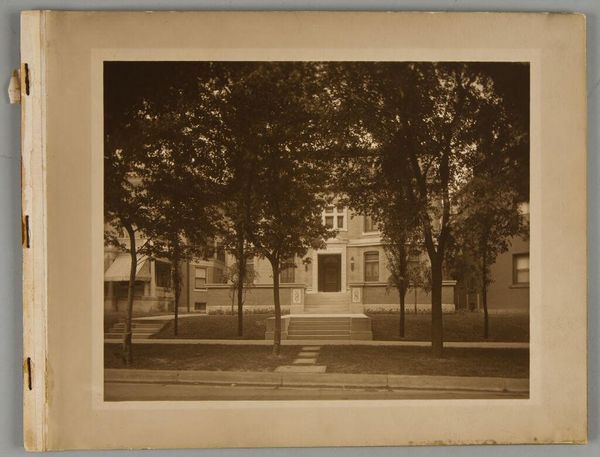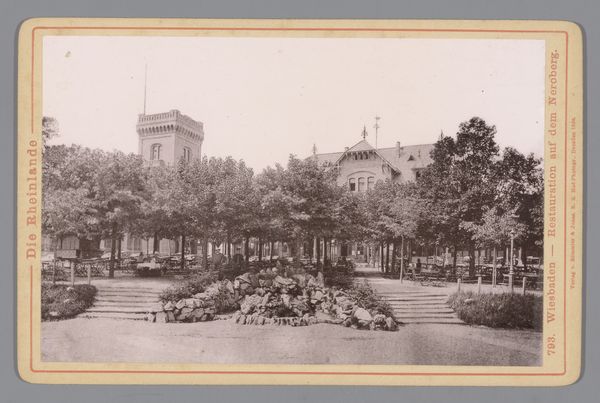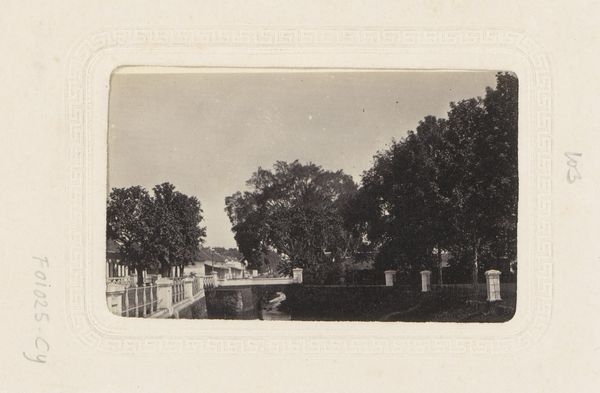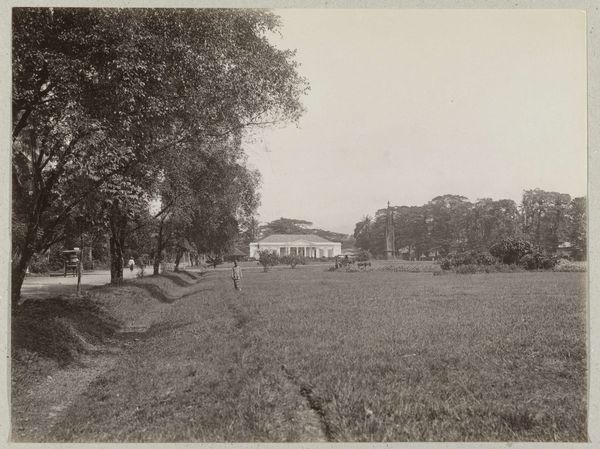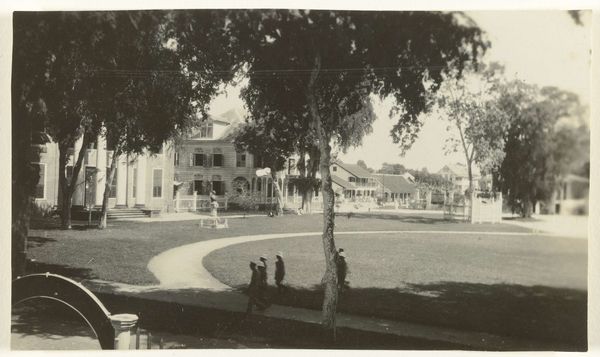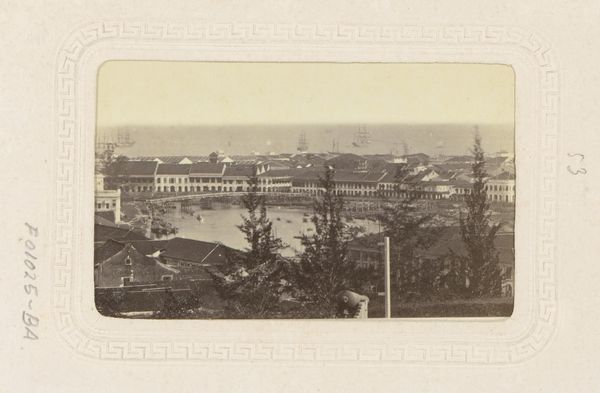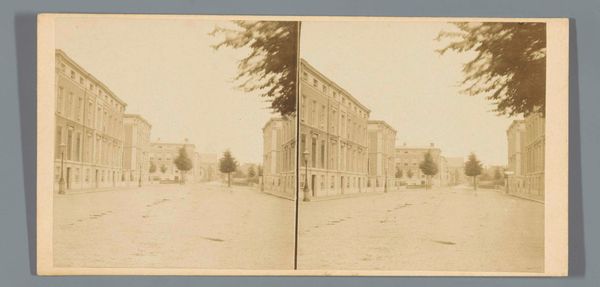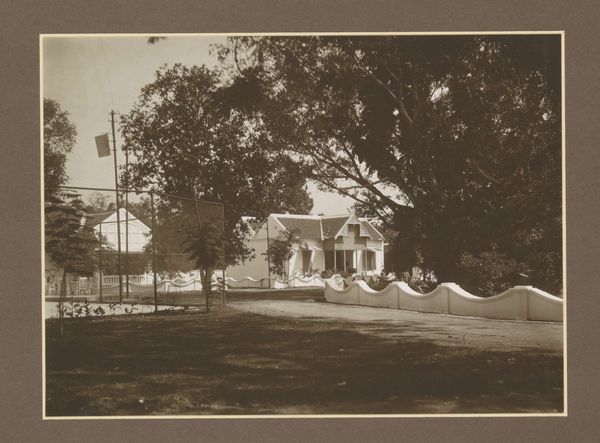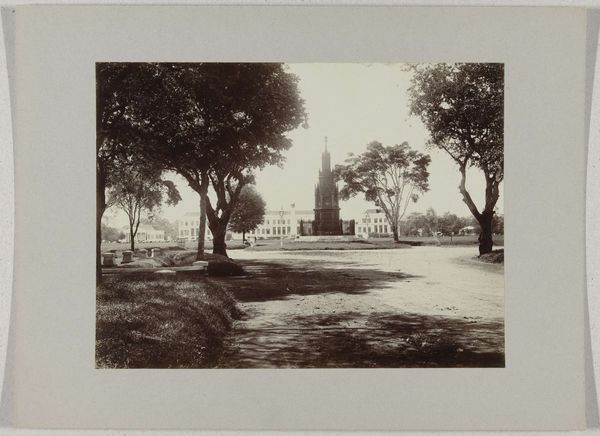
Dimensions: height 126 mm, width 82 mm
Copyright: Rijks Museum: Open Domain
Curator: This photograph, "Kerkplein in Zandvoort," was captured by A. Bakels Sr. sometime between 1890 and 1900, using the gelatin-silver print process. It presents a cityscape that is quite still, frozen in time. Editor: Yes, still is definitely the word that comes to mind. It's a bit somber, isn't it? The monochrome palette and almost empty square create a feeling of isolation, despite the figures clustered in the center. The muted tonality creates a documentary feel, almost like a historical record. Curator: Absolutely. Bakels' choice of gelatin-silver—a relatively new process at the time—allowed for sharper details and a wider tonal range compared to earlier photographic methods. You can really see that in the textures of the buildings and the bare tree branches. Considering the technology involved, and the chemical processes of manipulating silver salts on a light-sensitive surface, one wonders about the accessibility and democratization of art-making itself at that period. Editor: And if we contextualize it historically, we can think about Zandvoort at the turn of the century, likely a booming seaside resort. This image feels almost like a carefully curated vision of the "everyday," a stark contrast with the lived experience of social divisions and industrial advancements. Are the figures clustered together in the center by class or for mutual warmth? What opportunities might there have been for these people at the shore? What are we *not* seeing? Curator: That’s a fascinating perspective. Examining those figures also prompts us to consider the production of the print itself. It was not an instant snapshot. The time investment suggests Bakels had intentions to document Zandvoort society as he perceived it, considering what would or would not attract people. Editor: It invites you to read beyond the picturesque façade. And, that makes the photograph richer, in some ways a mirror reflecting not just the city square, but our own contemporary readings of history and representation. It invites many readings through both production, time, and even through identity, to engage with conversations around history, labor, class and memory. Curator: Precisely, I hadn't looked at it that way before. This image can trigger interesting ideas on photographic agency, labor, and cultural representations of leisure through history. Editor: Indeed! It’s a compelling window into a world undergoing tremendous shifts.
Comments
No comments
Be the first to comment and join the conversation on the ultimate creative platform.
